Charleston Currents #12.47 | Oct. 12, 2020
PUMPKIN TIME. It won’t be long before Halloween is here this year as neighbors start to put out decorations to welcome the ghoulish holiday. With coronavirus injecting new ways of life into everything, this story outlines how to be safe this year in spooky times.
TODAY’S FOCUS: Beasley leads Nobel Prize-winning food program
COMMENTARY, Brack: Activist high court keeps S.C. election barrier in place
IN THE SPOTLIGHT: Titan Termite & Pest Control
NEWS BRIEFS: How to vote early in the 2020 general election
FEEDBACK: Send us your thoughts
MYSTERY PHOTO: Off the top of your head, where is this?
CALENDAR: Wine-ing down and Safe Sounds
NEW BOOK: Charleston Renaissance led to Lowcountry cultural boom
Beasley leads Nobel Prize-winning food program
By Andy Brack, editor and publisher | Hats off and hearty congratulations to Former Gov. David Beasley and the United Nations’ World Food Program that he leads. Just days ago, it won the Nobel Peace Prize for its work to feed the world’s hungry. Part of the prize’s international glory is a tribute to Beasley’s leadership. It’s something in which the whole state should take pride.
Beasley, who admitted to reporters that he was speechless after hearing the news, wrote on Twitter earlier today: “I struggle to put into words what the @WFP family is feeling right now. We are so touched by your overwhelming support. But it breaks my heart that millions of people are starving today. Let this #NobelPeacePrize2020 awaken the world to the suffering and struggle of so many.”
Three years ago after Beasley took the job that has taken him all over the world, we offered the following profile of what he’s been doing. It’s fitting to republish it today. From August 2017:
David Beasley is having the time of his life.
The former South Carolina governor, who has spent almost two decades since being in office in mission work to help people around the world, now is executive director of the United Nations’ World Food Programme.
“The good news is we’re feeding 80 million people on any given day in 80 countries,” he said in an exclusive interview on the way to Central America. “The bad news is it’s getting worse out there – the famine, the droughts, the conflicts.”
Nominated to lead the world’s leading humanitarian organization for fighting hunger by another former governor, (then) U.N. Ambassador Nikki Haley, the (then) 60-year-old Beasley first was elected to the S.C. House of Representatives in 1978 as a college senior. The Pee Dee native rose in the Democratic Party to become the House Speaker Pro Tem, only to switch to the Republican Party in 1991. Elected governor three years later, he pushed a conservative vision of solving social problems through wealth creation. While governor, companies made more than $16 billion in capital investments in the state as property and business taxes went down by more than $1 billion.
After losing a reelection bid, Beasley focused on international outreach work thanks to the security provided by his family’s banking business in the Pee Dee. In the past 10 years, he’s deepened relationships with leaders around the world and worked in more than 100 countries on projects to foster peace, reconciliation and economic progress.
Simply put, David Beasley is the Palmetto State’s version of Jimmy Carter – a leader who is making a larger difference on the world stage after years in public office.
“All of the darkness of the world can’t put out the smile on a face,” Beasley reflected. “This job brings humanity down to the core level. When you see a hungry person, you don’t see a Democrat or a Republican, a black or white. You see a brother or sister who is struggling to survive. That transcends politics. All you want to do is help them.”
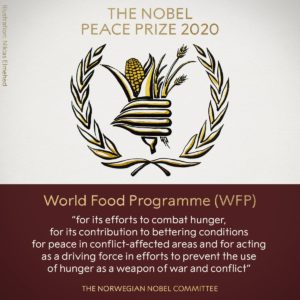 The World Food Programme, based in Rome, is a massive operation with 20 ships, 70 aircraft and 5,000 trucks that move food at the direction of more than 15,000 staffers across the globe.
The World Food Programme, based in Rome, is a massive operation with 20 ships, 70 aircraft and 5,000 trucks that move food at the direction of more than 15,000 staffers across the globe.
Beasley, who has been heading the agency since the spring (of 2017), spends his time in the halls of governments asking for first-world countries to contribute more so the agency can buy more food. Part of his job is to get other countries to donate more. The United States picks up about 40 percent of the program’s $6 billion budget.
“We are facing the worst humanitarian crisis on the planet since World War II. Without funding, there is very little we can do.”
But Beasley also spends a lot of time in conflict-ridden countries like Syria, Yemen and Somalia.
“To do the job right, I believe I must be on the ground talking to the people who are helping and our WFP staff doing the work,” he said. “The job does have its difficulties. When we lack funds, our teams have to decide who eats and who does not. Basically, to decide who lives and who dies. With all the wealth in the world today, why should we be in that position?”
Beasley admits it’s hard not to get down in the dumps when he sees crippling conditions around the globe. But he focuses on the good things being accomplished every day.
“There is no greater calling in life than to help people in need,” the former governor said. “That is what motivates me, what wakes me up every single day.
“To help people who are on the brink of death recover; to see a child go from literally barely breathing to smiling and playing; to watch a village celebrate when food falls from the sky – who could not love a job like that?
“Yes, one minute you are heartbroken and in tears, but the next, you are laughing with great joy.”
- If you want to help fight world hunger, you can donate at WFP.org. Or you can download the app called ShareTheMeal.
Activist high court keeps S.C. election barrier in place
By Andy Brack, editor and publisher | So the now-conservative U.S. Supreme Court, whose justices rail about judicial activism, now has butted into South Carolina politics with, you guessed it, activism.
 At issue: How to cast ballots safely in November in the Palmetto State. The S.C. General Assembly recently voted to make it a little easier for state voters to cast ballots early in this coronavirus pandemic year by allowing anyone to vote absentee, thus dropping a list of reasons voters usually have to turn to if they want to vote early.
At issue: How to cast ballots safely in November in the Palmetto State. The S.C. General Assembly recently voted to make it a little easier for state voters to cast ballots early in this coronavirus pandemic year by allowing anyone to vote absentee, thus dropping a list of reasons voters usually have to turn to if they want to vote early.
But lawmakers in the GOP-dominated legislature didn’t drop a requirement from 1953 that the voter must have a witness to sign a mail-in ballot for it to be valid — even though such a requirement wasn’t in place earlier this year during primary elections. By ignoring a Democratic push to remove the witness signature requirement in the general election because of the pandemic, the whole mess wound up in the courts. The state Republican Party fought hard to preserve the witness signature requirement with arguments about election security and integrity, a spurious bogey-monster because there have been virtually no cases of voter fraud here.
U.S. District Judge J. Michelle Childs of South Carolina last month said the witness signature requirement likely would be confusing or deter voters as well as boost risk to exposure to coronavirus. She put the requirement on hold for the presidential election, only to have a three-judge appellate panel reinstate the requirement. And then, to add to the drama, the full U.S. Court of Appeals for the Fourth Circuit reversed the appellate ruling and put the requirement on hold again.
Finally, the U.S. Supreme Court got into the fray with an emergency order which, as is typical, wasn’t explained. But according to the Associated Press, Justice Brett Kavanaugh, writing only for himself, “said it wasn’t for a court to second-guess the lawmakers’ decision to retain the witness requirement during the pandemic. And he said that for many years the Supreme Court has ‘emphasized that federal courts ordinarily should not alter state election rules in the period close to an election.’”
In other words, a Republican-dominated Supreme Court got actively involved to support a Republican-backed political effort to keep a requirement that would, as Childs rightly suggested, cause voter confusion, create barriers and chill the election process.
Bottom line: Republicans in South Carolina took active steps for the umpteenth time to support barriers to voting. We see it every election season when precincts get moved or there’s a new push for some kind of “election integrity measure,” the boldest of which in recent memory required much tougher voter identification at polling places.
College of Charleston political scientist Gibbs Knotts worries about the impact that this back and forth has on voters.
“I am in the camp that I care about election integrity and that we have to have confidence in our election system, but we need more people to vote, not less to vote, and we need to reduce barriers, not put barriers in the way,” he said.
From a public service perspective, he said, it was troubling that people who want to use mail-in ballots may now have an extra worry — whether the witness signature is done properly so their ballot count.
“We need to be making this easier, not harder,” Knotts said. “There should never be any question that your vote shouldn’t count.”
The S.C. Progressive Network’s Brett Bursey, a longtime activist pushing for more election transparency and easier voting, said whoever is in power generally wants to keep voting systems the same as they’ve always been, which in South Carolina means with hurdles.
“The intrangencies of incumbency,” he called it, saying incumbents often have “no reason to change the existing system with existing voters.”
- If you have questions about voting or need election information, you can contact the Election Protection Hotline at 866-OUR-VOTE (866-687-8683) or visit the S.C. Election Commission at www.SCVotes.gov.
Andy Brack is editor and publisher of Charleston Currents. Have a comment? Have a comment? Send to: editor@charlestoncurrents.com.
Titan Termite & Pest Control
 Titan Termite & Pest Control, headquartered in Charleston, is a full service residential, commercial and industrial pest control company serving South Carolina. It is a third-generation, family-owned company known for outstanding customer service. Each associate is dedicated to the customer and exhibits integrity and respect. Titan’s pest professionals can assist your commercial or residential location with general pest control, termite inspections, termite control, flea control, bed bug extermination, ant control and more. Titan Termite and Pest Control continues to set high standards so that its customers receive the best possible service. Titan’s technicians are knowledgeable of the latest in pest control techniques, which enables the company to customize effective treatment plans for every situation.
Titan Termite & Pest Control, headquartered in Charleston, is a full service residential, commercial and industrial pest control company serving South Carolina. It is a third-generation, family-owned company known for outstanding customer service. Each associate is dedicated to the customer and exhibits integrity and respect. Titan’s pest professionals can assist your commercial or residential location with general pest control, termite inspections, termite control, flea control, bed bug extermination, ant control and more. Titan Termite and Pest Control continues to set high standards so that its customers receive the best possible service. Titan’s technicians are knowledgeable of the latest in pest control techniques, which enables the company to customize effective treatment plans for every situation.
- Free estimate: 888-794-5603.
- Contact Titan online.
- To meet all of our underwriters, click here.
How to vote early in the 2020 general election
Staff reports | With so much voting information available online, the options to vote early can seem overwhelming or complicated. But voting early may save you long waits in line on Nov. 3. So here is a breakdown of everything you need to know:
How to vote early by mail
- Request and print your absentee ballot application online HERE. Or phone 843.744.8683 or submit a written request application to absentee@charlestoncounty.org. All applications must be received by 5 p.m. Oct. 24, 2020. Print your application if requested online
- Sign and return the application via email, fax (843.974.6419), regular mail (PO Box 71419, North Charleston, SC, 29415) or drop-off in person at one of these four locations.
- Send ballot back (with witness signature) via U.S. Postal Service (no postage required) or drop-off at one of four locations at an available date/time listed online (there will be a dedicated lane for voters to drive through). Deadline: No later than 7 p.m. on Nov. 3. 2020.
Vote early in person
Charleston County has four satellite voting locations that voters can visit to vote absentee in person. Voting hours are 8:30 a.m. to 5 p.m. Monday through Friday (also open Saturday, October 24 and Saturday, October 31 from 9 a.m. to 1 p.m.). No application needs to be completed prior to arrival. Be sure to bring one of these five forms of photo identification: S.C. driver’s license, S.C. Department of Motor Vehicles ID card, S.C. voter registration card with photo, federal military ID or U.S. passport. Satellite voting locations are:
- North Charleston Coliseum (Box Office Entrance): 500 Coliseum Drive, North Charleston (Oct. 5 – Nov. 2)
- Seacoast Church Mount Pleasant: 750 Long Point Road (Oct. 19 – Nov. 2)
- Seacoast Church West Ashley: 2049 Savannah Highway (Oct. 19 – Nov. 2)
- Main Library Downtown: 68 Calhoun St. (Oct. 19 – Nov. 2)
More information
- If you wish to check the status of your absentee ballot, click here.
- For Voter Registration questions, to register to vote, or update your address, email voterregistration@charlestoncounty.org.
- Use live chat or find other information at the department’s website here.
In other recent news:
![]() Rescued animals. Congratulations to the Charleston Animal Society for evacuating 30 cats and 50 dogs from Louisians last week as Hurricane Delta approached. The animals were to be placed with 10 partner organizations in the Carolinas and Florida. “These are the most vulnerable animals as others have already been evacuated to regional shelters,” Charleston Animal Society President and CEO Joe Elmore said in a statement.
Rescued animals. Congratulations to the Charleston Animal Society for evacuating 30 cats and 50 dogs from Louisians last week as Hurricane Delta approached. The animals were to be placed with 10 partner organizations in the Carolinas and Florida. “These are the most vulnerable animals as others have already been evacuated to regional shelters,” Charleston Animal Society President and CEO Joe Elmore said in a statement.
Port volumes returning. The S.C. Ports Authority’s September volumes reflect the strongest year-over-year activity since the pandemic hit, showing a continued recovery and strength in containers, vehicles and inland port moves. According to a press release, SC Ports handled 195,101 twenty-foot equivalent container units (TEUs) at Wando Welch and North Charleston container terminals — a record September for SC Ports and a slight increase year-over-year. SC Ports handled 580,912 TEUs in the first quarter of fiscal year 2021.
State high court says no to private school vouchers. The S.C. Supreme Court ruled Wednesday that Gov. Henry McMaster’s allocation of $32 million in federal funding for one-time tuition grants for students to attend private schools violated the state’s constitution (specifically, Article XI, Section 4). McMaster shot back in a statement this week that the ruling “jeopardized” millions in CARES Act money allocated by the General Assembly to the state’s historically black colleges and universities (HBCUs), many of which are private. The ruling did not mention the governor’s stalled allocation of $2.4 million to HBCUs for technology updates nor the General Assembly’s Cares Act allocation.
Hurricanes and flooding labeled top domestic threats. Hurricanes and flooding, two natural disasters South Carolina experiences with some frequency, were labeled among top domestic threats in an Oct. 6 Department of Homeland Security Threat Assessment report. The threats were listed in the 26-page report along with Russian cyber threats and social media influence, the coronavirus pandemic’s threat to the national economy and violent extremists from within the United States. This week, the FBI busted an anti-government group’s plot to kidnap Michigan Democratic Gov. Gretchen Whitmer. But back to the hurricanes and floods (because that’s in the news, too, with Louisiana getting hammered yet again): “These disasters pose a significant threat to human health and safety, property, critical infrastructure, and homeland security while subjecting the nation to frequent periods of insecurity, disruption, and economic loss.”
Teen birth rate decreases, but state still high on national list. Fewer South Carolina teens, ages 15 to 19, gave birth in 2019 when compared with 2018, continuing a trend where the state’s teen birth rate has dropped 49 percent since 2010 and 71 percent decline since 1991, according to Fact Forward, formerly the South Carolina Campaign to Prevent Teen Pregnancy. While the overall rate decreased by 1.8 percent from 2018 to 2019, Black teenage girls gave birth at a higher frequency in that time period, an increase of 1.8 percent. The state currently ranks 11th in the nation for its teen birth rate.
Statehouse Report’s Lindsay Street contributed to this report. Have a comment? Send to: editor@charlestoncurrents.com
Got something to say? Let us know by mail or email
We’d love to get your impact in one or more ways:
Send us a letter: We love hearing from readers. Comments are limited to 250 words or less. Please include your name and contact information. Send your letters to: editor@charlestoncurrents.com. | Read our feedback policy.
Tell us what you love about the Lowcountry. Send a short comment – 100 words to 150 words – that describes something you really enjoy about the Lowcountry. It can be big or small. It can be a place, a thing or something you see. It might be the bakery where you get a morning croissant or a business or government entity doing a good job. We’ll highlight your entry in a coming issue of Charleston Currents. We look forward to hearing from you.
Off the top of your head, where is this?
Here’s a South Carolina scene, but where is it? Send to editor@charlestoncurrents.com. And don’t forget to include your name and the town in which you live.
Our Oct. 5 photo, “Red bridge,” showed the red bridge at Magnolia Plantation and Gardens. Congratulations to these photo detectives for guessing correctly: Jay Altman of Columbia; George Graf of Palmyra, Va.; and Marnie Huger of Richmond, Va.
- Send us a mystery: If you have a photo that you believe will stump readers, send it along (but make sure to tell us what it is because it may stump us too!) Send it along to editor@charlestoncurrents.com.
Wine-ing down and Safe Sounds
![]() Wine Down Wednesday: 5 p.m. to 7 p.m., Oct. 14, Old Towne Creek County Park, West Ashley. Guests will enjoy wine and live music from Mark Jackson, while experiencing the beauty of this natural site. A commemorative wine glass is included with your admission. Food truck fare will be available for purchase on-site from Southern Roots Smokehouse. Masked required. Cost: $15. More.
Wine Down Wednesday: 5 p.m. to 7 p.m., Oct. 14, Old Towne Creek County Park, West Ashley. Guests will enjoy wine and live music from Mark Jackson, while experiencing the beauty of this natural site. A commemorative wine glass is included with your admission. Food truck fare will be available for purchase on-site from Southern Roots Smokehouse. Masked required. Cost: $15. More.
Safe Sounds at Firefly: Saturdays through Oct. 31, Firefly Distillery, North Charleston. The distillery’s socially-distanced concerts are back with its fall Safe Sounds series. Two shows this week:
- Oct. 16: Robostasik Robotrio + Ryan Stasik with Oukuo
- Oct. 17: Doom Flamingo with Sexbruise?
For both shows, doors open at 6 p.m., with shows at 6:30 p.m. Tickets ($125 for four) can be purchased in advance at citypapertickets.com.
Sounds of the Lowcountry: 6 p.m., Oct. 23, Firefly Distillery, North Charleston. The Charleston Jazz Orchestra will pay homage to early jazz incubated by the Jenkins Orphanage Band, which produced jazz greats such as William “Cat” Anderson, Jabbo Smith and Freddie Green at this new CJO Live at Firefly series. Based on the rhythms of the Gullah/Geechee Culture, that Lowcountry Swing can be found in some of our favorite tunes – Until I Met You, Tuxedo Junction, and Porgy & Bess. From Ragtime to Broadway and everything in between, the CJO will explore the Sounds of the Lowcountry with music that is distinctly Charleston Jazz. Tickets are $30 and can be purchased at www.charlestonjazz.com or by calling the box office at 843.641.0011. Doors open at 5pm. Show begins at 6pm.
“Connections” on display: Through Oct. 24, Redux Contemporary Art Center, Charleston. The exhibition of works by Gret Macintosh features looks at physical connections between places, such as waterways, roads, and bridges that the artist has experienced over the last 15 years of living in the Charleston area. The exhibition is open 11 a.m. to 4 p.m., Mondays and Wednesdays; 11 a.m. to 3 p.m. Fridays; and by appointment. More.
From Etchings to Pastels: Through Nov. 29, Lowcountry Image Gallery, The Charleston Museum. The museum has partnered with the Pastel Society of South Carolina to present new interpretations of etchings stemming from the Charleston Renaissance Movement about 100 years ago. Learn more.
Online offerings:
- Gibbes Museum. You can enjoy lots of local art offerings through the website and social media accounts of the Gibbes Museum. At 10 a.m. on weekdays, the museum posts virtual readings and workshops on Facebook. Find more online.
- Avian Conservation Center. Access videos and live streaming presentations online to learn about what’s going on at the Center for Birds of Prey.
- Around the world. You can visit 500 museums across the world online through this Google amalgamation of sites.
If you have any online events, drop us a line (editor@charlestoncurrents.com) and make sure to put “Online event” in the subject line. Similarly, if you’ve got cool ideas for stuff to do while in isolation at home, send them our way.
Charleston Renaissance led to Lowcountry cultural boom
By Skyler Baldwin | Between World Wars I and II, the city of Charleston experienced a boom in the arts as writers, architects, artists, musicians and historical preservationists came together to represent and improve the city. This “Charleston Renaissance” period was part of a greater interwar artistic movement known as the Southern Renaissance that swept through the region. Today, it is credited with helping to kickstart the city’s tourism industry.
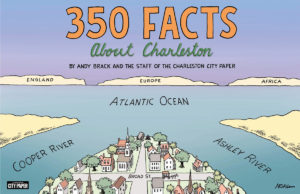 ORDER TODAY: Copies of a new book of historical facts about Charleston, aptly titled 350 Facts About Charleston, are in Lowcountry-area bookstores now, but if you can’t swing by, you can order a copy online today.
ORDER TODAY: Copies of a new book of historical facts about Charleston, aptly titled 350 Facts About Charleston, are in Lowcountry-area bookstores now, but if you can’t swing by, you can order a copy online today.
Smith remembered as a catalyst for the Charleston Renaissance
Alice Ravenel Huger Smith, born 1876, was a native artist and lifelong resident of Charleston. While she was primarily self-taught, she is best remembered for her scenic views of Charleston streets and poetic marsh vistas that capture the mystical aura of the Lowcountry. Hoping to convey an essential idealized representation of her subjects, she painted almost exclusively in watercolor from 1924 on. She, along with her associates, Elizabeth O’Neill Verner, Alfred Hutty, and Anna Heyward Taylor, was at the center of Charleston’s artistic reawakening during the early 20th century as a founding member of the Charleston Etcher’s Club and the Southern States Art League, as well as being involved in the Historic Charleston Foundation, Carolina Art Association, and Music and Poetry Society. Her work can be found today in many notable collections, such as the Brooklyn Museum, the Ogden Museum of Southern Art and the de Young Fine Arts Museums of San Francisco.
Painter, preservationist is a leader of rebirth of Charleston arts
Elizabeth O’Neill Verner was born in 1883 in Charleston, first studying art with Alice Ravenel Huger Smith and later enrolling at the Pennsylvania Academy of Fine Arts. In 1907, she married E. Pettigrew Verner; however, it wasn’t until 1925 that she would become a professional artist and the sole supporter for her children. She became a white portraitist known for representing African-Americans, especially the city’s flower vendors, and illustrated DuBose Heyward’s 1925 novel, Porgy. She came to specialize in drawings of historic buildings in effort to preserve the history of the city from her studio and home at 38 Tradd St. Her work is held by the Metropolitan Museum of Art, the Smithsonian American Art Museum and others across southeastern America. South Carolina’s highest arts award is named for her.
Hutty shows “decay and decrepitude” in his art
Renowned artist Alfred Heber Hutty, a northerner, is closely identified with the Charleston Renaissance of the 1920s because he rarely idealized the city, choosing instead to show the “decay and decrepitude” around him with his impressionistic oil paintings of Charleston streetscapes. He also depicted live oaks draped with Spanish moss, dilapidated old buildings and animated African Americans. In 1919, Hutty discovered Charleston while looking for a warmer place to spend his winter months. He embraced Charleston’s beauty and lifestyle and for the rest of his life, he alternated homes between summers in Woodstock, N.Y., and winters in Charleston. Today, Hutty’s work can be found around the state and in the Library of Congress, with the largest collection owned by the Gibbes Museum of Art.
Printmaker seen as one of the leading Charleston Renaissance artists
Anna Heyward Taylor was born in Columbia in 1879 as one of eight children of a surgeon who served in the Civil War in the Army of Northern Virginia. She received an education from the South Carolina College for Women and graduated in 1897 before traveling around Europe to study art between 1903 and 1917. She then served in the American Red Cross in France and Germany during World War I, returning to America and settling in Charleston in 1920. There, she became known for her prints highlighting life in the Lowcountry, including agricultural subjects both past and present, local fauna and flora, architecture, street scenes and the city’s tradespeople. Alongside Alice Smith, Elizabeth O’Neill Verner and Alfred Hutty, Taylor is today considered one of the four leading artists of the Charleston Renaissance.
Skyler Baldwin, a staff writer of the Charleston City Paper, contributed to 350 Facts About Charleston, from which these entries are excerpted.
- Preview the book by visiting CharlestonFacts.com.
As more people stay home to deal with the coronavirus crisis, people are looking for things to do. You can find some fun things to do online in our calendar section below, but let us also encourage you to FORWARD your issue of Charleston Currents to your friends and encourage them to subscribe. It’s got a great price, as you know: Free! We hope they’ll enjoy our coverage.
- DONATE. Now also would be a great time to contribute as we deal with the crisis. In advance, thank you.
OUR UNDERWRITERS
Charleston Currents is an underwriter-supported weekly online journal of good news about the Charleston area and Lowcountry of South Carolina.
- Meet our underwriters
- To learn more about how your organization or business can benefit, click here to contact us. Or give us a holler on the phone at: 843.670.3996.
OUR TEAM
Charleston Currents offers insightful community comment and good news on events each week. It cuts through the information clutter to offer the best of what’s happening locally.
- Mailing address: 1316 Rutledge Avenue | Charleston, SC 29403
- Phone: 843.670.3996
Charleston Currents is provided to you weekly by:
- Editor and publisher: Andy Brack, 843.670.3996
- Contributing editor, common good, Fred Palm
- Contributing editor, money: Kyra Morris
- Contributing editor, Palmetto Poem: Marjory Wentworth
- Contributing editor, real estate: Digit Matheny
- Contributing photographer: Rob Byko
- Charleston Currents also uses content from the outstanding staff at the Charleston City Paper, a sister publication.
SUBSCRIBE FOR FREE
Subscriptions to Charleston Currents are free.
- Click here to subscribe.
- Unsubscribe. We don’t want to lose you as a reader of Charleston Currents, but if you must unsubscribe, you will have to do it through the email edition you receive. Just go to the bottom of any of your weekly newsletters and click the “unsubscribe” function. If that doesn’t work, please send us an email with the word “unsubscribe” in the subject line.
- © 2008-2020, City Paper Publishing, LLC. All rights reserved. Charleston Currents is published every Monday by City Paper Publishing LLC, 1316 Rutledge Ave., Charleston, SC 29403.






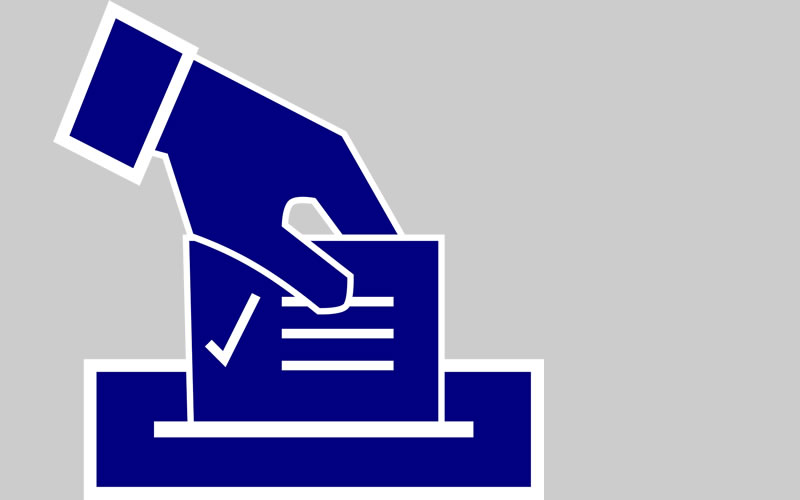
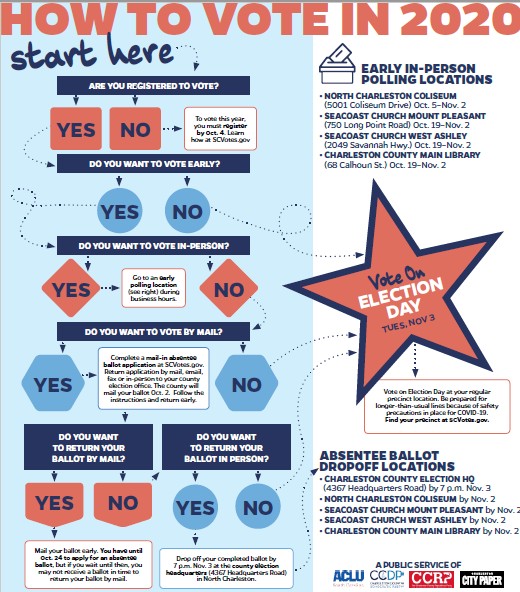
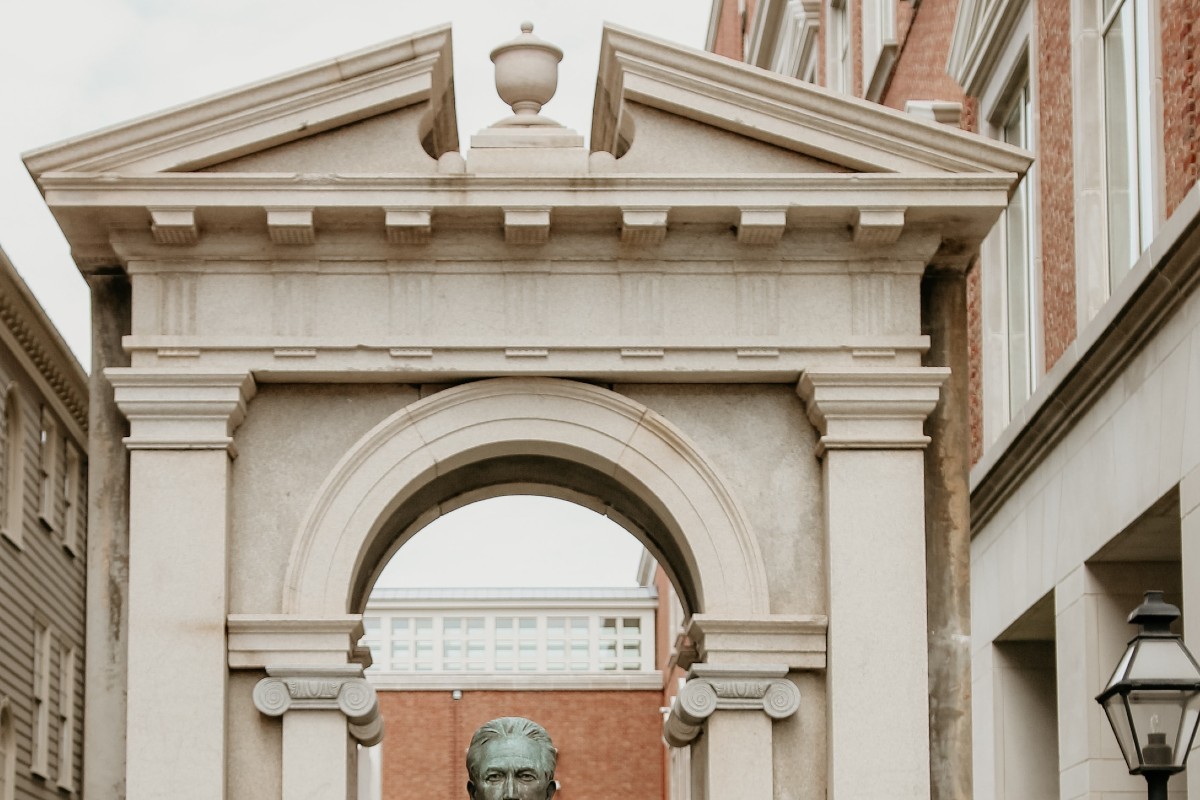
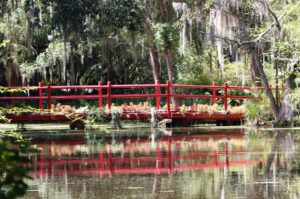


 We Can Do Better, South Carolina!
We Can Do Better, South Carolina!

























Pingback: NEW for 10/12: Hats off to UN food program; Activist court; How to vote early - Charleston Currents | Philanthropy Media Network